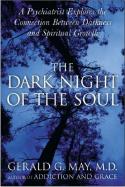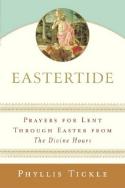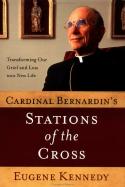|
Issue Date: March 26, 2004 Lenten books
Author Paula Huston opens The Holy Way by describing a morning walk with her husband in Amish territory, then recalls the first time she read about Thoreau’s deliberate choice to leave society for a simple cabin in the woods. She envied the ability to live stripped-down lives: “Later, as an overburdened adult, I sometimes yearned for solitude with such intensity that it frightened me.” In The Holy Way, Huston meditates on her subsequent experiences of trying to incorporate mindfulness, simplicity and silence into her hectic life as a college professor with four noisy teenagers -- from going on retreat at the Camaldolese monastery in Big Sur, Calif., to shutting off the stereo in the living room. Her own story is woven with wisdom from the Christian saints who model particular values on the path toward simplicity. A Publishers Weekly starred review calls The Holy Way “one of the best books available on living the simple life.”
We cannot escape suffering in our lives, says cancer survivor Gerald May. But we can be aware of how God speaks to us through such experiences -- and we can await the dawn of joy that comes at the end of trials. May, a psychiatrist and spiritual counselor, explores “the dark night of the soul,” an idea crystallized in the poetry and theology of the two 16th-century Carmelite saints, John of the Cross and Teresa of Avila. Through his examination of these two Spanish mystics, May concludes that the “dark night” is more than a one-time encounter. In his words, it is “an ongoing transition from compulsively trying to control one’s life toward a trusting freedom and openness to God and the real situations of life.” One of the last chapters, “The Dark Night Today,” applies the Carmelites’ spiritual wisdom to modern-day psychological disorders.
Praying the Scriptures sets the prayers of the Bible in their larger context of divine revelation. Benedictine Fr. Demetrius Dumm, professor of New Testament at St. Vincent Seminary, Pa., explains that biblical prayer is always a response to God’s saving deeds among us, primarily the two key events in the Old and New Testaments: the liberation of the Hebrew slaves in Exodus, and the Resurrection. Dumm is a fine teacher, and his careful explanation of biblical themes makes for a quick and enlightening read.
Phyllis Tickle, contributing editor in religion for Publisher’s Weekly, reintroduced modern Christians to the ancient tradition of praying the divine office in her earlier trilogy The Divine Hours. In Eastertide, she provides a compilation of daily prayers -- morning office, midday office, Vespers and Compline -- for the season of Lent and Holy Week, from Ash Wednesday to Easter Monday. Christians will find calls to prayer, psalm refrains, readings and hymns to mark out portions of their day as holy “hours.” This “manual for doing fixed-hour prayer” is an easy introduction to the divine hours for Christians not familiar with this time-honored practice. -- Antonia Nelson
Just as the images of the Stations of the Cross have been refashioned from era to era and from culture to culture, so has the way we meditate on these mysteries, relating the events of then to the realities of our lives. That is a device Eugene Kennedy uses in his Lenten offering, Cardinal Bernardin’s Station’s of the Cross: Transforming Our Grief and Loss into New Life. Kennedy, who earlier wrote a reflective biography of Bernardin, My Brother, Joseph, in this book mines his 30-year friendship with Bernardin and the biblical scholarship of the late Fr. Raymond Brown to both illuminate the life of one of America’s great churchmen and simultaneously lead the reader through provocative meditations for the liturgical season. In Kennedy’s construct, Bernardin lived out a kind of passion and public death that parallels the stations -- from the false and very public accusation of sexual abuse, to his public dying of pancreatic cancer, to the public rejection by his peers of an idea to begin to find common ground in a deeply divided church. At the same time, Bernardin’s public side was the expression of a faith richly nurtured in private, “a hidden life, to be sure, in which he prays daily, and dangerously, that Jesus may take over his life so that, unafraid of criticism from any side, he will have the courage not only to preach Jesus but to live his life as well.” Kennedy’s book raises a model of hope while prodding the reader to reflect deeply on all manner of redemption. -- Tom Roberts National Catholic Reporter, March 26, 2004 |




